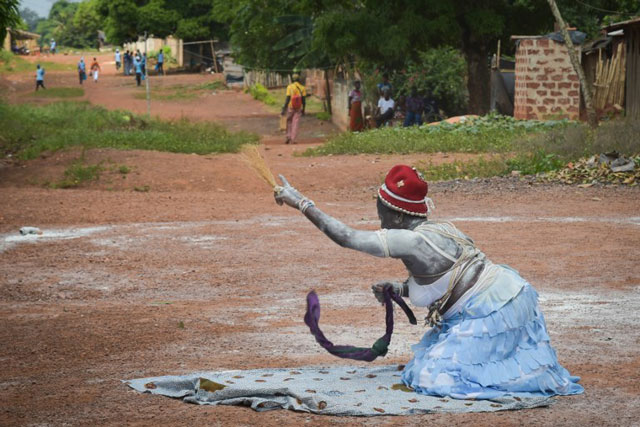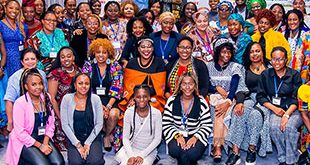
ANIANSUE, Ivory Coast | AFP | A dozen women, their bodies coated with clay, sway to beating drums as if in a trance, ankle bells jingling as they stamp their feet, in the eastern Ivorian town of Aniansue.
They are training to become certified “komians”, or priestesses, steeped in traditional lore, the properties of medicinal plants and the techniques of conflict resolution.
They are credited with the power to cast spells and predict the future — at a time when the komians fear for their own future as modern society increasingly leaves tradition behind.
The women belong to the 25 million-strong Akan ethnic group predominant in eastern Ivory Coast and across the border in Ghana, in the bosom of the traditional Ashanti kingdom.
No local king or tribal chief can be enthroned without the intervention of these priestesses, whose school, set up in 1992, gained national recognition in 2014.
“The komian has a sanctifying role,” Pascal Abinan Kouakou, the Ivorian employment minister, told AFP. “She participates in the cohesion and stability of our regions.”
– Disrepair –
Even so, the school is slowly deteriorating. Its ochre walls have not been painted for years, and most of its buildings are in disrepair.
“Help us! We sleep rough — we have no dormitories while we take in dozens of patients each month,” said Adjoua Messouma, who founded the Adjoua Messouma Centre for the Initiation of Komians of Aniansue (CIKAMA).
The course lasts at least three years, with around 20 graduates each year.
They can then take official positions in their local villages or set up private practices.
The school, bordered on one side by a teak plantation, features a large central courtyard with a giant mango tree in the middle, surrounded by houses.
People come to the school seeking cures or treatments from the komians for conditions such as cancers, infertility, epilepsy and mental illnesses.
Others come for counselling over personal problems.
“I was diagnosed with appendicitis which I want to treat with plants,” said businesswoman Dame Yvonne Ezan after a consultation.
– Under fire –
“If we don’t watch out, the komians, this culture that is intrinsic to our society, could disappear,” said the employment minister, who was recently elected president of the regional council.
He complained of a “lack of national policy to promote this cultural heritage”.
Criticism of komians, notably from evangelical churches, is becoming increasingly insistent and acerbic.
“Today we are seen as the devil incarnate,” said 22-year-old Leonie Kouame, who put her university studies on hold in order to “study and commune with the spirits” — and become a komian.
In the town of Amelekia, between the big city of Abengourou and Aniansue, around 20 priestesses are sounding the alarm, saying they lost a great defender in the person of Jean-Marie Adiaffi, who died in 1999.
The author, who was awarded France’s Grand Prix Litteraire d’Afrique Noire in 1981, advocated the modernisation of African religions.
He coined the word “bossonism” to capture the religion purveyed by the komians — “bosson” meaning the spirits believed to inhabit rivers, mountains and forests as well as figurines, such as those taking pride of place in two sanctuaries at the school.
As in most African animist religions, these are revered in villages across the continent.
– ‘We’re not afraid’ –
“We’re not afraid, despite the threats from the churches and we are not about to give up,” said the komian Eba Kouakou, aged in her 60s whose body is covered with dozens of talismans.
“The komian will never disappear.”
Nevertheless the komians are looking for a benefactor to save the school or even allow it to expand to other regions.
In the meantime, Pascal Abinan Kouakou has promised to place the school on the tourist map as a means of promotion and fundraising.
“I have a duty to ensure that it does not disappear,” said the minister, himself the grandson of a celebrated komian named Akua Mandjouadja, who ruled the region for many years.
 The Independent Uganda: You get the Truth we Pay the Price
The Independent Uganda: You get the Truth we Pay the Price



